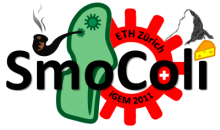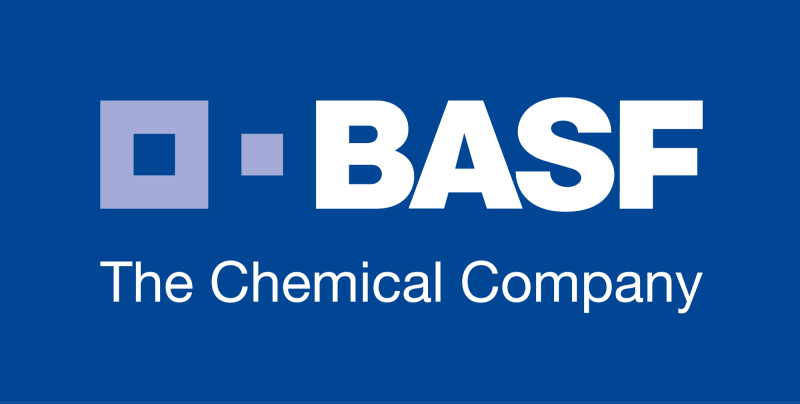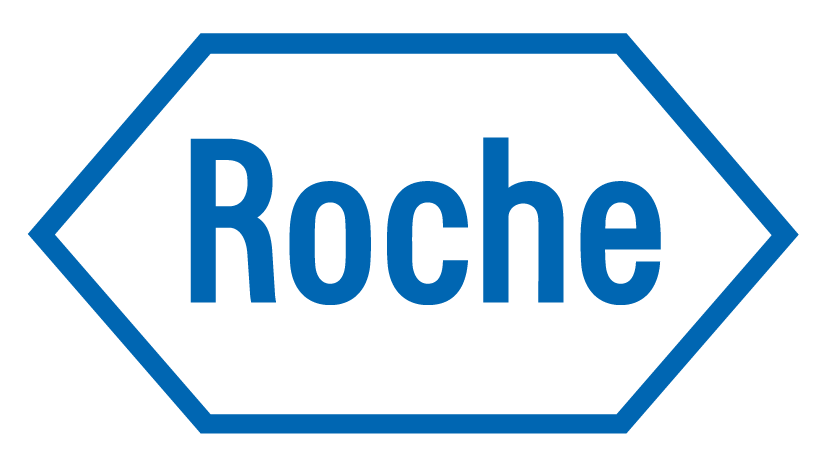Team:ETH Zurich/Biology/Cloning
From 2011.igem.org
(→Western Blot) |
(→Western Blot) |
||
| (6 intermediate revisions not shown) | |||
| Line 252: | Line 252: | ||
{{:Team:ETH Zurich/Templates/SectionStart}} | {{:Team:ETH Zurich/Templates/SectionStart}} | ||
== Western Blot == | == Western Blot == | ||
| - | The western blot was performed using the QIAGEN Penta-His HRP Conjugate Kit. A detailed description of the different steps can be found in [ | + | The western blot was performed using the QIAGEN Penta-His HRP Conjugate Kit. A detailed description of the different steps can be found in [[#Ref1|[1]]]. |
| - | Some important notes on the protocol: | + | |
| + | Some '''important notes''' on the protocol: | ||
* Prior to performance of the western blot, a SDS-PAGE gel was done as described in the chapter above. | * Prior to performance of the western blot, a SDS-PAGE gel was done as described in the chapter above. | ||
* We used the tank-blotting procedure as described in the protocol provided by the company. | * We used the tank-blotting procedure as described in the protocol provided by the company. | ||
| - | * | + | * For immunodetection (chromogenic method) we used a HRP Conjugate Substrate Kit from Bio-Rad [[#Ref2|[2]]]. |
{{:Team:ETH Zurich/Templates/SectionEnd}} | {{:Team:ETH Zurich/Templates/SectionEnd}} | ||
| Line 314: | Line 315: | ||
* Chloramphenicol: 34ug/ml for low copy and 100ug/ml for high copy plasmids | * Chloramphenicol: 34ug/ml for low copy and 100ug/ml for high copy plasmids | ||
* Kanamycin: 10ug/ml for low copy and 30ug/ml for high copy plasmids | * Kanamycin: 10ug/ml for low copy and 30ug/ml for high copy plasmids | ||
| + | {{:Team:ETH Zurich/Templates/SectionEnd}} | ||
| + | {{:Team:ETH Zurich/Templates/SectionStart}} | ||
| + | = References = | ||
| + | <span id="Ref1">[1] [http://www.qiagen.com/literature/handbooks/literature.aspx?id=1000171 QIAGEN Handbooks and Protocols]</span> | ||
| + | |||
| + | <span id="Ref2">[2] [http://www3.bio-rad.com/B2B/BioRad/jsp/default.do?BV_SessionID=@@@@0347918889.1319835173@@@@&BV_EngineID=ccchadfemklihldcfngcfkmdhkkdfll.0&catalogNumber=170-6431&contentDescrip=contains+premixed+4-chloro-1-naphthol%2C+hydrogen+peroxide+solutions%2C+color+development+buffer%3B+makes+1+L+color+development+solution&nextPage=BRCatalogPage&oid=10008 Bio-Rad HRP Conjugate Substrate Kit]</span> | ||
| + | |||
{{:Team:ETH Zurich/Templates/SectionEnd}} | {{:Team:ETH Zurich/Templates/SectionEnd}} | ||
{{:Team:ETH Zurich/Templates/HeaderNewEnd}} | {{:Team:ETH Zurich/Templates/HeaderNewEnd}} | ||
Latest revision as of 20:59, 28 October 2011

Material and methods
A lot of lab work was done to assemble SmoColi .
Double digest for cloning
| Variant 1 | Variant 2 | |
| Plasmid |
|
|
| Insert |
|
|
Ligation
- Ligation mix
- 1:5 ratio of plasmid backbone : Insert
- 1 µl 10 x T4 Ligase buffer (vortex)
- 0.5 µl T4 Ligase
- adjust to 10 µl with ddH2O
- Let the mixture stay for 1h at room temperature
- Denature the ligase at 65 °C for 5 min
Transformation
- Thaw competent cells on ice.
- Add 200 µl cells to 10 µl ligation mix
- Place the mixture put them on ice for 30 min
- Heatshock 30 sec at 42 °C
- Place the mixture again on ice for 2 min
- Add 4 x SOC medium (800 µl)
- Let them grow for 60 min at 37 °C
- Spin cells down for 5 min at low speed
- Remove the supernatant, resuspend the cells
- Spread 100 µl of the cells onto the plates.
PCR
PCR mixture
- 10 µl 10x Phusion buffer
- 1 µl 10 mM dNTPs
- 2.5 µl 10 µM forward primer
- 2.5 µl 10 µM reverse primer
- 1 ng DNA template
- 0.2 µl Phusion polymerase
- optional DMSO
adjust to 50 µl with ddH2O
PCR procedure
- initial denaturation: 98 °C for 30 sec
- 35 cycles
- denaturation: 98 °C for 5 sec
- annealing: annealing temperature (see Primer list) for 10 sec
- extension: 72 °C for 30 sec per kb
- final extension: 72°C for 5 min
- storage at 4°C
Colony PCR
Pick a colony and resuspend in 10 µl ddH2O
PCR mixture
- 1 µl colony
- 1 µl 10x taq buffer
- 0.8 µl dNTPs
- 0.05 µl 10 µM forward primer
- 0.05 µl 10 µM reverse primer
- 0.1 µl Taq
adjust to 10 µl with ddH2O
PCR procedure
- initial denaturation: 95 °C for 30 sec
- 25 cycles
- denaturation: 95 °C for 30 sec
- annealing: 55 °C for 30 sec
- extension: 68 °C for 90 sec
- final extension: 68 °C for 5 min
- storage at 4 °C
Preparation of glycerol stocks
From the overnight cultures 15 % glycerol were made and stored at -20 °C
AlcR testing
- preparatory overnight culture of JM101 with AlcR-testsystem in LB medium
- cultures in M9 minimal medium
- all final experiments were done in 15 ml falcons with 3 ml cells
- AlcR production was induced with either 0, 1, 100 ng/ml anhydrotetracycline added at 4 °C
- For AlcR activation 0, 10, 1000 µM acetaldehyde was added at 4 °C
- Cells were incubated at 37 °C in closed tubes
- Fluorescence of GFP was measured after 1 h, 2 h and over night, all measurements were done in triplicates
Chemically competent E. coli (JM 101)
1 M MOPS
- 10.46 g MOPS
Total 50 ml
1 M CaCl2•2H2O
- 7.35 g CaCl2
Total 50 ml
3 M KOAc
- 14.72 g KOAc
Total 50 ml
TFBI
- 1.2 g RbCl
- 0.99 g MnCl2•4H2O
- 1 ml 1 M CaCl2
- 1 ml 3 M KOAc
- 15.33 ml glycerol 100 %
Total 100 ml; bring to pH 5.8 with 0.2 N acetic acid; filter sterilize
TFBII
- 0.048 g RbCl
- 3 ml 1 M CaCl2
- 0.4 ml 1 M MOPS pH 7
- 7 ml glycerol 100 %
filter sterilize
Preparation
- add 0.5 ml fresh O/N culture to 250 ml LB medium
- shake at 37 °C until OD600 is 0.5-0.7
- cool on ice, spin down at 4 °C/ 3000rpm/ 5 min, put pellet on ice
- resuspend pellet in 5 ml TFBI with pipet, add 70 ml cool TFBI, incubate on ice for 2-4 h
- spin down at 4 °C/3krpm/ 5min
- resuspend pellet in 10 ml TFBII
- aliquot suspension into pre-cooled tubes, 200 µl each
- freeze aliquots immediately in dry ice, store at -80 °C
Chemically competent E. coli (DH5α)
Done according to the [http://openwetware.org/wiki/Preparing_chemically_competent_cells_%28Inoue%29 Inoue protocol] on OpenWetWare
SDS page
(D-BSSE MolBioSkript 2011)
Cast gels
| Compound | 12% Running gel | 5% Stacking gel |
| H2O (ml) | 6.7 | 3.5 |
| 1.5 M Tris-HCl, pH 8.8 (ml) | 5 | |
| 0.5 M Tris-HCl, pH 6.8 (ml) | 3 | |
| 10% (w/v) SDS (ml) | 0.2 | 0.08 |
| Acrylamide/Bis-acrylamide (30%/ 0.8% w/v) (ml) | 8 | 1.32 |
| 10% (w/v) ammoniumpersulfate (APS) (ml) | 0.1 | 0.1 |
| TEMED (&mikro; l) | 30 | 15 |
Preparation
- Clean glass plates with 30% EtOH (front- and back-glass plate, 10-spike comb)
- Assemble them in SDS-PAGE gel casting apparatus
- Mix the ingredients for the running gel except for APS and TEMED
- Add APS and TEMED to the lower gels solution, mix by gently
- Pour the gels quickly with a 2 mL pipette. Leave about 1 cm below the bottom of the comb for the stacking gel and avoid formation of air-bubbles.
- Overlay your gels very carefully with isopropanol. The isopropanol helps to avoid drying-out of gels during polymerization and puts weight on the gel thereby helping to obtain a smooth surface.
- Wait until all gels have polymerized completely
- Mix the components of the stacking gel while the running gel is polymerizing, leave out the APS and TEMED
- Remove the isopropanol completely, wash with 0.5 mL of H2O to get rid of all isopropanol
- Add APS and TEMED to the stacking gel solution, mix by gently shaking the Falcon tube
- Pour the stacking gel on top of the running gel
- Insert the comb without introducing air-bubbles.
- Wait until gels have completely polymerized (approx. 30 min)
- Remove the gels from the casting apparatus, remove the combs, and clean the gels from gel-remnants
SDS-PAGE
- Assemble SDS-PAGE apparatus
- Load 5 µl protein marker into the first well
- Mix 50 μl samples with 50 µl Laemmli buffer
- Incubate the mix at 95°C for 10 min in a heating block
- Load 10 µl of your samples into the following wells (non-induced, induced…)
- Connect your gel chamber to the power supply, run the gel with 120 V fixed for around 40 min, watch the advance of the blue front
- When the blue front is ca. 0.5 cm before the end of the gel, stop the run and remove the gels from the apparatus
- Remove the gel from the glass-plates
- Add ca. 100 ml Coomassie staining solution to the gel and incubate on the shaker for ca. 30 min
- Rinse the gel with ddH2O
- Add ca. 100 ml destaining solution to the gel, incubate for until the protein-bands are clearly visible and background signals are almost completely disappeared
Western Blot
The western blot was performed using the QIAGEN Penta-His HRP Conjugate Kit. A detailed description of the different steps can be found in [1].
Some important notes on the protocol:
- Prior to performance of the western blot, a SDS-PAGE gel was done as described in the chapter above.
- We used the tank-blotting procedure as described in the protocol provided by the company.
- For immunodetection (chromogenic method) we used a HRP Conjugate Substrate Kit from Bio-Rad [2].
Diffusion test in tubes
- agarose with E. coli with IPTG inducible GFP were filled in different tubes
- one end of the tube was put in a IPTG solution
Mediums
Agar plates
- 18g/l Agar added per liter respective medium
SOB
- 0.5 % (w/v) yeast extract
- 2 % (w/v) tryptone
- 10 mM NaCl
- 2.5 mM KCl
- 20 mM MgSO4
adjust to pH 7.5 by adding 1M NaOH
SOC
- SOB
- 20 mM glucose
LB medium
- 10 g Bacto-tryptone
- 5 g yeast extract
- 10 g NaCl
Total 1 l
M9 minimal medium
10x M9
- 12.8 g Na2HPO4
- 3 g KH2PO4
- 0.5 g NaCl
- 1 g NH4Cl
Total 100 ml
autoclave seperatly
- 10 x M9
- 1 M MgSO4
- 1 M CaCl2
- 1 % (w/v) thiamine solution
- 20 % (w/v) glucose
Antibiotics
- Ampicilin: 50ug/ml for low copy and 150ug/ml for high copy plasmids
- Chloramphenicol: 34ug/ml for low copy and 100ug/ml for high copy plasmids
- Kanamycin: 10ug/ml for low copy and 30ug/ml for high copy plasmids
References
[1] [http://www.qiagen.com/literature/handbooks/literature.aspx?id=1000171 QIAGEN Handbooks and Protocols]
[2] [http://www3.bio-rad.com/B2B/BioRad/jsp/default.do?BV_SessionID=@@@@0347918889.1319835173@@@@&BV_EngineID=ccchadfemklihldcfngcfkmdhkkdfll.0&catalogNumber=170-6431&contentDescrip=contains+premixed+4-chloro-1-naphthol%2C+hydrogen+peroxide+solutions%2C+color+development+buffer%3B+makes+1+L+color+development+solution&nextPage=BRCatalogPage&oid=10008 Bio-Rad HRP Conjugate Substrate Kit]
 "
"



